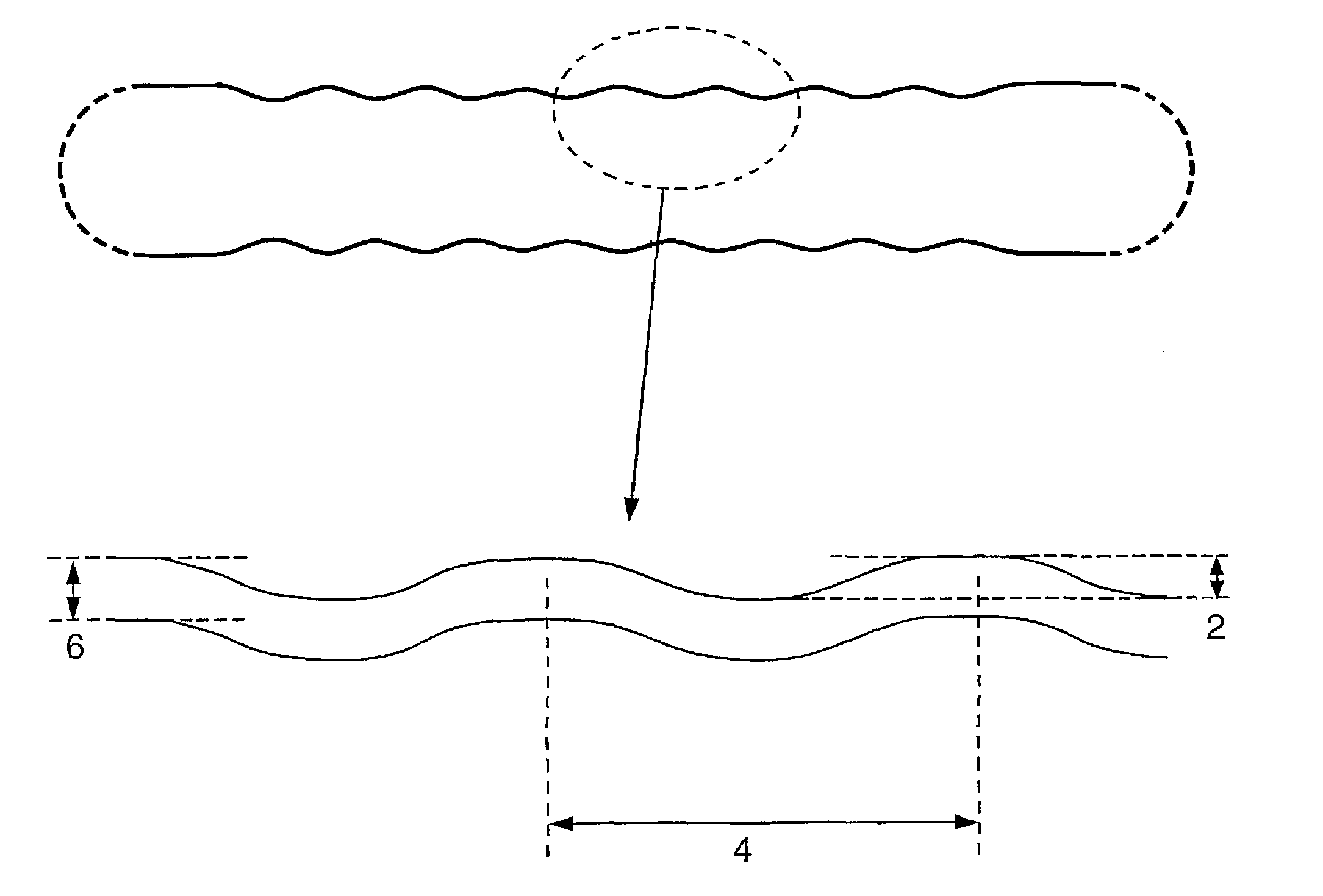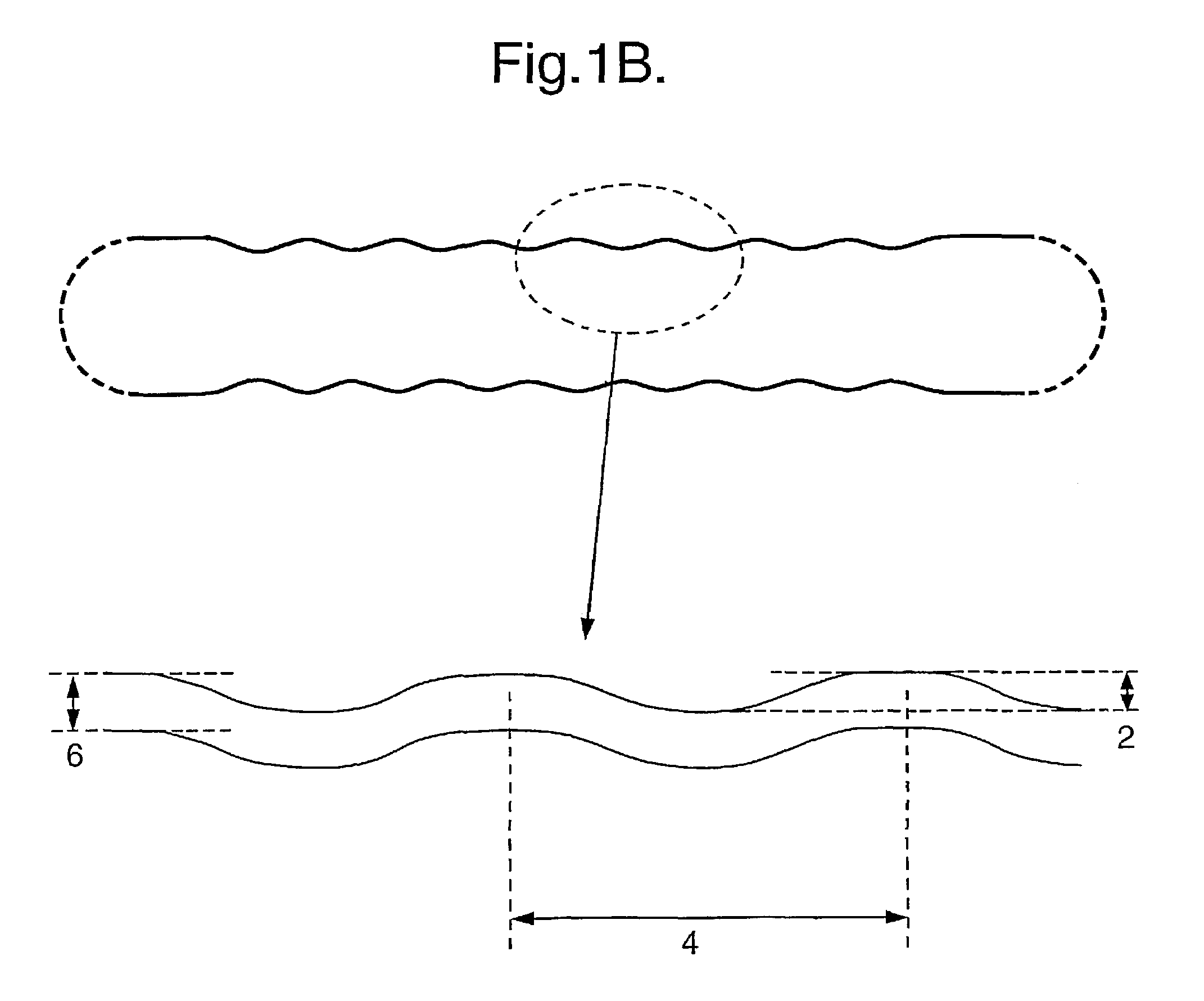Grooved brachytherapy sources
a radioactive source and groove technology, applied in the field of radiotherapy, can solve the problems of difficult to achieve accurate placement of sources, adversely affect the accuracy of source placement, unsatisfactory side effects in patients, etc., and achieve the effect of enhancing the ultrasound visibility of radioactive sources, facilitating the detection of devices, and enhancing ultrasound reflection
- Summary
- Abstract
- Description
- Claims
- Application Information
AI Technical Summary
Benefits of technology
Problems solved by technology
Method used
Image
Examples
example 1
[0093]A wide band imaging ultrasound transducer ATL L10-5 was mounted in the wall of a water tank. The transducer was connected to an ATL HDI 5000 ultrasound scanner and imaging was performed at 6.5 MHz, a typical imaging frequency used in clinical transrectal ultrasound.
[0094]A brachytherapy seed was mounted on a holder located 50 mm from the transducer surface, which could be rotated to defined angles in relation to the direction of the ultrasound beam. The seed was glued on to the tip of a needle protruding from the specimen holder with cyanoacrylate glue so that the seed's centre of gravity coincided with the rotational axis of the holder. The angular rotation could be set with half a degree accuracy, which is of great importance given the high angular dependency of the ultrasound backscatter. The holder could also be adjusted by translation to position the seed in the focal point of the transducer and fixed throughout the experiments.
[0095]A series of measurements mapping the u...
example 2
[0096]A smooth steel rod and a rod with a square surface pattern was imaged in vitro as described in Example 1. Images are acquired at 0, 20 and 40 degrees rotation, and are shown in FIG. 2. The upper series of images is a smooth 0.8 mm diameter, 6.5 mm length steel rod while the lower series is a similar steel rod with a cut surface with 0.1 mm wide helical square grooves, having a spacing of 0.54 mm and with a depth of 0.05 mm.
example 3
[0097]An excised dog prostate was imaged in a water tank with an ATL HDI 5000 scanner using an imaging frequency of 6.5 MHz. Two steel rods as described in Example 2 were implanted using an 18G needle. The prostate with the rods implanted was then rotated and imaged at different angles—see FIG. 3.
PUM
 Login to View More
Login to View More Abstract
Description
Claims
Application Information
 Login to View More
Login to View More - R&D
- Intellectual Property
- Life Sciences
- Materials
- Tech Scout
- Unparalleled Data Quality
- Higher Quality Content
- 60% Fewer Hallucinations
Browse by: Latest US Patents, China's latest patents, Technical Efficacy Thesaurus, Application Domain, Technology Topic, Popular Technical Reports.
© 2025 PatSnap. All rights reserved.Legal|Privacy policy|Modern Slavery Act Transparency Statement|Sitemap|About US| Contact US: help@patsnap.com



